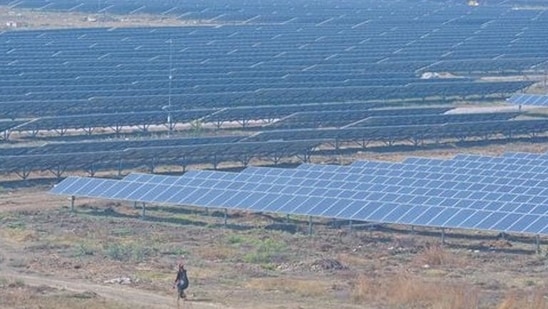Cabinet clears ₹12k-cr green energy corridor
Green energy corridors are being set up in two phases with the second phase of the transmission corridors to supply 20 gigawatt (GW) of renewable energy to the national grid from the seven states of Gujarat, Himachal Pradesh, Karnataka, Kerala, Rajasthan, Tamil Nadu and Uttar Pradesh.
As part of India’s green energy push, the Cabinet Committee on Economic Affairs (CCEA) chaired by Prime Minister Narendra Modi on Thursday approved the ₹12,031 crore second phase of setting up transmission projects for supplying electricity from renewable energy projects.

Green energy corridors are being set up in two phases with the second phase of the transmission corridors to supply 20 gigawatt (GW) of renewable energy to the national grid from the seven states of Gujarat, Himachal Pradesh, Karnataka, Kerala, Rajasthan, Tamil Nadu and Uttar Pradesh.
This decision comes in the backdrop of Modi pledging at the COP26 summit in Glasgow in November to meet 50% of India’s energy requirements from renewable energy by 2030 and increasing non-fossil fuel power generation capacity to 500GW by the end of this decade.
“The Cabinet Committee on Economic Affairs, chaired by the Prime Minister, Shri Narendra Modi, today approved the scheme on Green Energy Corridor (GEC) Phase-II for Intra-State Transmission System (InSTS) for addition of approximately 10,750 circuit kilometres (ckm) of transmission lines and approx. 27,500 Mega Volt-Amperes (MVA) transformation capacity of substations,” India’s ministry of new and renewable energy said in a statement.
The government is pulling out all stops to ensure that this huge injection of electricity in the grid from infirm sources such as solar and wind doesn’t pose any threat to the national grid. These corridors form an important component to ensure that the grid frequency always remains within the 49.90-50.05 Hz (hertz) band. Also, recently an Automatic Generation Control (AGC) has been made operational which sends signals to power plants every four seconds to maintain frequency and thereby ensuring reliability of India’s power system.
“The scheme is targeted to be set up with total estimated cost of Rs. 12,031.33 crore and Central Financial Assistance (CFA) @ 33 percent of the project cost i.e. Rs. 3970.34 crore. The transmission systems will be created over a period of five year from Financial Year 2021-22 to 2025-26. The Central Financial Assistance (CFA) will help in offsetting the Intra-State transmission charges and thus keep the power costs down,” the statement said.
The first phase of green energy corridors is under implementation in Andhra Pradesh, Gujarat, Himachal Pradesh, Karnataka, Madhya Pradesh, Maharashtra, Rajasthan and Tamil Nadu and will help supply around 24 GW of renewable energy by 2022.
“The scheme is for addition of 9700 ckm of transmission lines and 22600 MVA capacity of substations having estimated cost of transmission projects of Rs. 10,141.68 crore with Central Financial Assistance (CFA) of Rs. 4056.67 crore,” the statement said.
Recently union ministries of power and new and renewable energy approved 23 Inter State Transmission System Projects (ISTS) with an estimated cost of Rs15,893 crore. The state-run Power System Operation Corp Ltd (Posoco) oversees the country’s critical electricity load management functions through the National Load Dispatch Centre (NLDC) and a set of regional load dispatch centres (RLDCs) and state load despatch centres (SLDCs). India has 33 SLDCs, five RLDCs—for the five regional grids that form the national grid—and one NLDC.
India has achieved its NDC target with total non-fossil based installed energy capacity of 157.32 GW which is 40.1% of the total installed electricity capacity. Of this, solar, wind and hydropower accounts for 48.55 GW, 40.03 GW and 51.34 GW respectively. Also, India’s nuclear energy based installed electricity capacity stands at 6.78 GW. Also, 63 GW of renewable energy capacity is under various phases of construction and installed power capacity from non-fossil fuels is expected to go up to 66% by 2030.
PM Modi also pledged at the COP26 to cut India’s total projected carbon emission by 1 billion tonnes by 2030 and reduce the carbon intensity of the nation’s economy by less than 45% by the end of the decade and net-zero carbon emissions by 2070.
The interest in India’s green energy economy continues to grow with the sector receiving foreign direct investment (FDI) of $7.27 billion from 2014-15 up to June 2021. Of this $797.21 million was received during 2020-21. According to the Central Electricity Authority, by 2030, the country’s power requirement would be 817GW, more than half of which would be clean energy.





